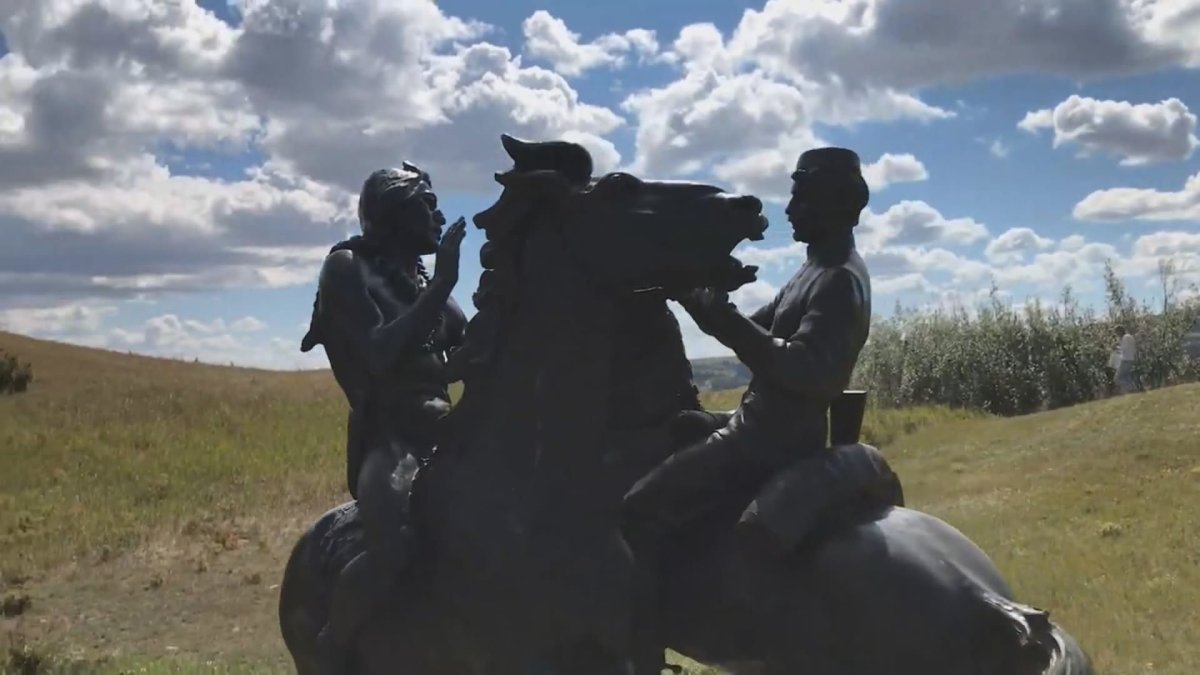The Cypress Hills Massacre in southwest Saskatchewan is one of Canada’s worst mass murders. Historic reports suggest 10 to 30 people were killed but historians and descendants say the number of fatalities was likely more than 300.

To commemorate National Indigenous History Month and to honour the 150th year anniversary of the horrific event, historian Matthew Spencer from Carry-The-Kettle Nakoda Nation shares the story of the Cypress Hills Massacre. Spencer said the Carry-The-Kettle Nakoda Nation are direct descendants of the Assiniboine people, now known as the Nakoda, who were decimated 150 years ago.
“It’s a very, very important date,” said Spencer. “Our ancestors say about 300 people had passed away – back then … our population sizes were definitely misinterpreted a lot of the time – but our ancestors say about 300 people died … (even though) government records say about 10 to 15 had passed away.”
On June 1, 1873, an altercation erupted at a trading post between a small band of the Nakoda people and a group of American wolfers over missing horses. Spencer said it was a misunderstanding, but the altercation was fueled by alcohol, which was one of the main trading commodities.
“One thing led to another … the alcohol was flowing, and people were drunk on both sides,” he said. “They started to exchange words and then the next thing you know, a massacre had occurred. Our people didn’t really have the most advanced technology. We had bows and arrows and one-shot kind of muzzle-loaders. Those wolfers had high repeating rifles.”

Get daily National news
Years later, Spencer said his people buried the dead in sacred burial grounds within the Cypress Hills. The site of the massacre is now a national historic site where replicas of the two trading posts remain along with a stone monument.

The community and the descendants of the Assiniboine people held a commemoration near the massacre site and at what is now called Fort Walsh. The Office of the Treaty Commissioner (OTC) said this is an important part of history that everyone should learn about.
“Understanding our history, knowing our collective history as what’s now Canada and as people and citizens, will inform how we move forward,” said OTC Commissioner Mary Culbertson. “Everything that happened in the past is a reflection and plays a role in how people are treated and how we treat each other today.”
Culbertson said this important piece of history also tells the story of the creation of the North-West Mounted Police (NWMP).
“Many people died … so (when) news of this massacre reached Ottawa just as the debate was going on in the House about the creation of a police force,” said Culbertson, “it fueled that advocacy even more … the first assignment (of the NWMP) was to retrieve the wolf hunters and the whiskey traders who committed this massacre against the Assiniboine people.”
Spencer works as a historical interpreter at Fort Walsh to share the story of the Cypress Hills Massacre with visitors. For National Indigenous History month, Spencer wants people to know why the NWMP, the predecessor to the RCMP, was first created.
“My people, of Carry-The-Kettle, have played kind of a sad role in the development of Canada,” he said. “It was unfortunate that that event had happened to our people but we’re very resilient people.”
– with files from The Canadian Press





Comments